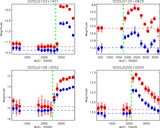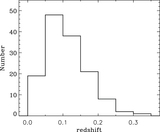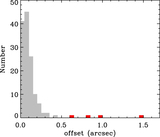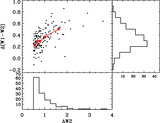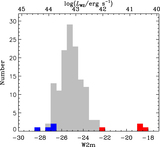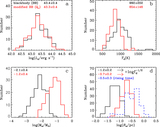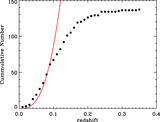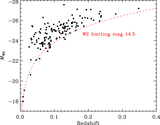Image Details

Caption: Figure 10.
The W2 peak luminosity function of our MIRONG sample. The data points are plotted with ﹩\mathrm{log}\,{L}_{{\rm{W}}2}﹩ ranging from 40.5 to 44.5 (bin 0.5). The faint end (﹩\mathrm{log}\,{L}_{{\rm{W}}2}﹩ ∈ [40.5, 41]) is totally contributed by extremely low-redshift SNe (red circle). The high end (﹩\mathrm{log}\,{L}_{{\rm{W}}2}﹩ > 42) is fitted by a single Schechter function (gray line). The shifted gray dashed line depicts the luminosity function of the primary emission that causes the MIR outburst assuming a dust covering factor of 0.3. We have also overlaid the observed X-ray (blue squares; data from Figure 6 of Auchettl et al. 2018) and optical (magenta triangles; data from Figure 1 of van Velzen 2018) luminosity functions of TDEs for comparison.
Copyright and Terms & Conditions
© 2021. The American Astronomical Society. All rights reserved.



